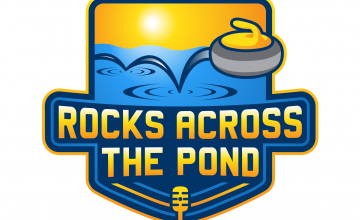By Mark Steinwachs of Rocket City Curling Club
Welcome to my inaugural post for Rocks Across the Pond. It’s interesting starting a new blog. What do you say to hook the reader from the start? What will make them want to read past the first few lines? I can tell you one thing, it’s probably not a series of questions. So, let’s get right into it shall we.
For the first (of hopefully many) Rocks Across the Pond blog posts I want to take time to talk something crucial to every curling club … volunteering. Don’t roll your eyes at me, I know you’ve heard it all before. But the reason you’ve heard it, and I’m leading with it now, is because it’s critical for clubs.
For those of you new to the sport (and some of you that have been around but need a reminder) I’m about to tell you something important. Curling is far more than just the time you are on the ice. I’m going to say it again for the people in the back.
Curling is far more than just the time you are on the ice.
What does that mean (And we’re back to questions. Sorry.)? I’m going to take a look at this from the perspective of an arena club. Before you can throw the first stone we need to:
- Pebble, nip, and brush the ice
- Set the hacks
- Get out scoreboards
- Get the stones in place
- Set up tables
- Grab the club gear
- Put up sponsor banners
- Still get a few minutes of pre-stacking in (we curlers are social creatures)
- Oh yeah, and if you play in a rink where the houses aren’t painted in you need to mark those out too.
Ice time is at a premium and it isn’t cheap. It’s a struggle to find ice and get decent times. Every minute counts. If you are playing in a league or coming to a drop-in session it is imperative you arrive early to help set up and stay late to help tear down. This. Is. Not. Optional. You need to build this into your curling routine. Each club will have a time they start setting up, but if you don’t know 20-30 minutes is a safe bet (I’m personally a 30-minute guy).
One arena club I play for has four sheets (three of which are used for our Sunday league and the fourth is a weekly Learn to Curl.). The six teams that play the early game set up. The six teams that play the late game tear down. That’s twenty-four people per! Amazing!
But (we all know this never ends well) of the 24 that should be playing, probably a team or two will only have three playing that week. Then because real-life happens another four or so people will have things that stop them from being there early. From 24 we are down to 18(ish). Still, we’re good!
Something funny happens at this point, and I’ve never been able to figure it out. From the 18 left, there will be four to six people who are always there early (me being one of them). The rest will filter in between the time we are supposed to start setup and when we are finished.
Maybe you’ve gotten there early and it didn’t seem like you were needed or you just always run a little bit late to everything (I don’t buy that, FYI) or you think there are too many people (that’s never the case). Sorry to break it to you, but nope.
What I’m getting at is there is no reason (other than the aforementioned life-happens kind of stuff) not to be at the rink early to set up or stay late to tear down.
There is a saying that floats around: “If you’re early, you’re on time. If you’re on time, you’re late.” If setup is 30 minutes prior to the game, guess what? That means you need to be there and ready to start setting up at that time, not walking into the rink, getting a drink, using the restroom, getting changed, etc. Doing all of that can eat up 10-15 minutes of precious ice time.
After 700-something words, where are we at? (Besides learning that this guy likes asking questions). Looks like we haven’t really talked about teardown. Methinks that, and more, will be for the next post.
If you’ve read this far, you know that curling is far more than showing up and throwing stones. Everyone who plays has a responsibility to the club (and yes, the sport) to take part in everything that makes the game happen. If you didn’t realize that, well, now you know.
Until next time…
“When hell freezes over, I’ll curl there too.” — Author unknown
